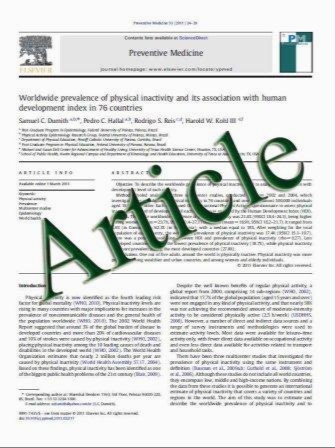Reduced soleus muscle injury at long muscle length during contraction in the rat
- نوع فایل : کتاب
- زبان : انگلیسی
- مؤلف : Seigo Usam, Tomoyuki Kurose , Yuko Ando , Minoru Hayakawa , Seiichi Kawamata
- چاپ و سال / کشور: 2010
Description
Muscle injury was studied to test the hypotheses that maintaining the soleus muscle at a long muscle length during contraction prevents muscle injuries and that the prevention of initial muscle injuries reduces subsequent muscle damage. The rat sciatic nerve was stimulated for 30 min with plantar or dorsal flexion of the foot, and the time course of contraction-induced injuries was examined. The soleus muscle injuries were first classified into one of five types, and the percentages of aberrant sarcomere areas observed in the soleus muscle were then separately quantified by electron microscopy at 0, 1, 6, 12, and 24 h (n = 3) post-stimulation. At a short muscle length (plantar flexion) during contraction, the soleus muscle showed sarcomere hypercontraction (9.8 ± 2.5%, mean ± standard error) and Z-band disarrangement (31.0 ± 4.5%) at 0 h, sarcomere hypercontraction (6.7 ± 1.9%), Z-band disarrangement (28.0 ± 4.9%), and sarcomere hyperstretching (1.3 ± 1.3%) at 1 h, the absence of sarcomere hypercontraction, but Z-band disarrangement (6.7 ± 1.9%) and sarcomere hyperstretching (5.0 ± 1.8%) at 6 h, and myofilament disorganization at 12 and 24 h (5.2 ± 1.5 and 2.5 ± 1.0%, respectively). In contrast, the soleus muscles at a long muscle length (dorsal flexion) during contraction using a self-made brace showed alterations in 1.2–2.4% of sarcomeres at 0 h and afterwards. Desmin disappeared, and a-actinin immunostaining was weaker in areas of sarcomere hypercontraction, whereas dystrophin was always detected along the sarcoplasmic membrane, suggesting that the integrity of the sarcolemma was intact. These results indicate that initial and subsequent muscle injuries were significantly reduced at long muscle length during contraction, probably through the prevention of sarcomere hypercontraction, and that initial muscle injuries rapidly progress to other injuries or normal structure.
Anat Sci Int (2011) 86:50–57 Received: 18 October 2009 / Accepted: 9 April 2010 / Published online: 18 May 2010 Japanese Association of Anatomists 2010


